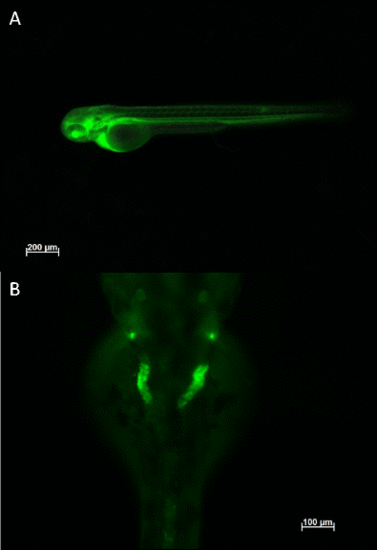- Title
-
Zebrafish as a model for kidney function and disease
- Authors
- Outtandy, P., Russell, C., Kleta, R., Bockenhauer, D.
- Source
- Full text @ Pediatr. Nephrol.
|
The developing kidney in a 48-h post-fertilisation zebrafish embryo. Shown is an image of a transgenic fish Tg(wt1b:EGFP), expressing the fluorescent protein E-GFP in kidney progenitor cells. The kidney is seen by its GFP expression, with notable structures labelled. The pronephric tubules have not yet reached their full length at this stage of development but will elongate further by 3.5 days post-fertilisation |
|
Injection of 10 kDa FITC-dextran into a wild-type zebrafish embryo at 72 h post-fertilisation visualised on a fluorescence inverted compound microscope. a Injection of the tracer into the common cardinal veins taken just after injection, showing uptake of the dextran into the blood vasculature of the embryo. b Dorsal visualisation of the dextran being taken up in to the pronephric duct and tubules after 20 h incubation post injection. Note that the tubules appear convoluted as they form a coiled loop around the glomerulus (not shown) and show reduced fluorescence in the rest of the embryo indicative of normal renal filtration processes |


